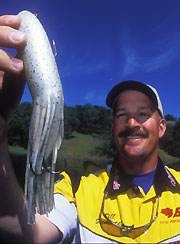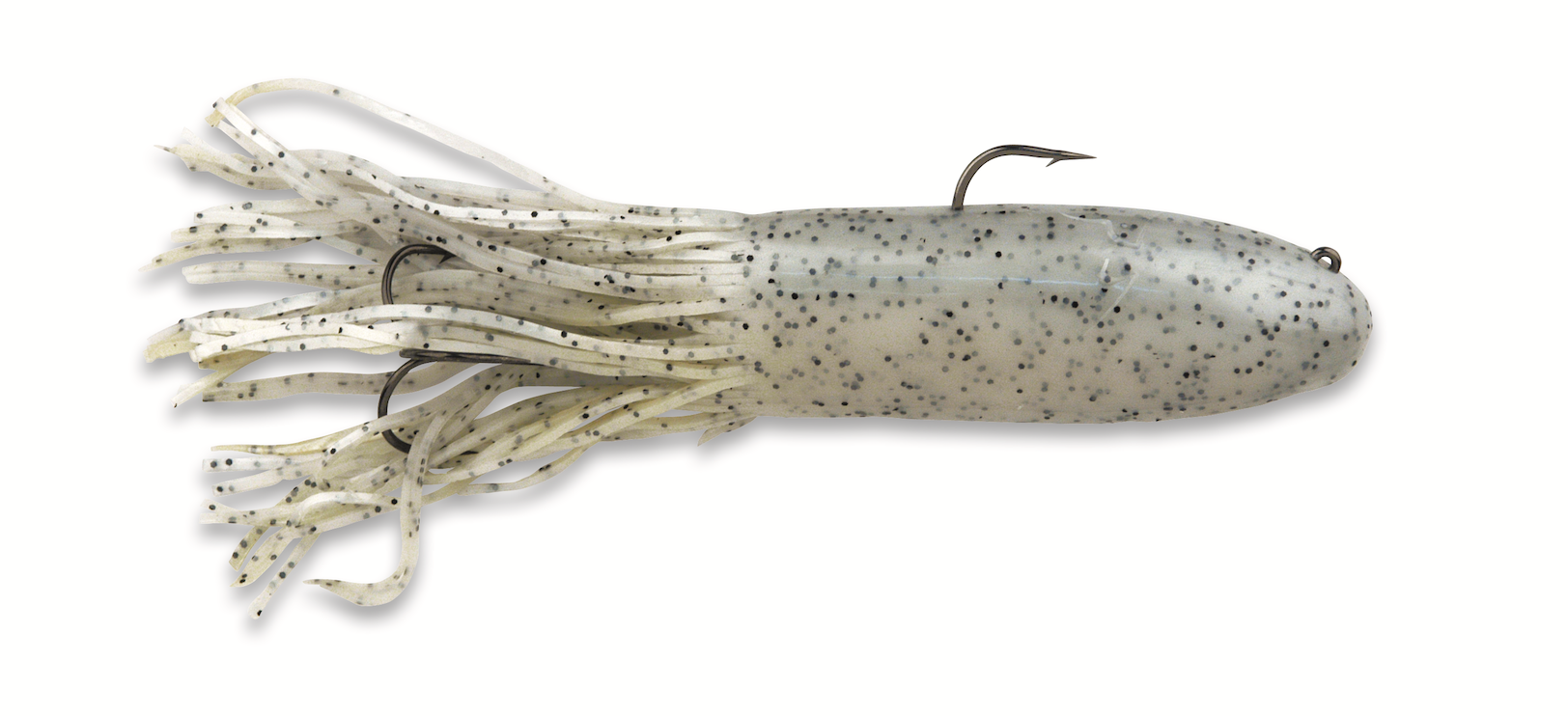The Beginning of "Illusion of Realism" Has Time Changed The BBZ? We Think Not!
Mike Jones and Bill Siemantel argue that "illusion" and "realism" cannot be totally divorced from one another. Photo Credit: Bill Siemantel.
If you haven't taken the time yet, find your way to https://www.tackledirect.com/ and click on the "swimbaits" section. There, you'll find a rather complete assortment of the lures available right now. The sheer number and diversity of design should give you pause. Where to start? Most likely, some of the prices may get your wallet hand trembling.
Well, just imagine if every spinnerbait or crankbait or jig was displayed in that section. In any one category, how many of them will actually catch fish? The answer should be obvious: All of them.
Face facts, anything with a hook attached can fool a bass, any bass, once in a while. But if you want to reach some consistency in your swimbait efforts, you need to understand the deficiencies and strengths of each lure.
In the next few post we're going to get you headed down the right path. First however, so we're all speaking the same language, you need to understand some terminology. Whether you're referring to wood plugs, giant tubes or swimbaits 7” or larger, they all fall under the general classification of "big baits."
One of Bill Siemantel’s Original Wood Plugs (1985)
Wood plugs – This group includes solid or jointed wood/composite baits designed primarily for the upper water column – specifically at or near the surface. There are other ways to fish them – using lead-core line for instance – but that's for another column.
These baits generate their action at the front of the lure and, as a result, many employ flat tails to create a convincing profile. Whether equipped with a soft-plastic tail section or not, every lure in this category relies on a jointed construction, diving bill or a combination of design elements to produce action.
Clearly, the term "wood" is old-school and certainly won't be an accurate description of things that have come to light the last 10 years. If nothing else, it reminds us of where we started.
Another one of Bill Siemantel’s designs early 1990 (originally made with Pete Cormier “Deadly Duo Baits” and then mass produced by Lindy Little Joe under Tiger Tubes)
Giant tubes – These are the super-size versions of the venerable tubebait. Siemantel’s Lindy's Tiger Tube were perhaps the best ever made, but times have changed and other companies carry large tubebaits now. Big flippin' tubes of the style favored in tournaments don't apply. Compare the two in size, application, water displacement, etc. and you'll see what we mean.
Early 1990 boot tail from Sean Donovan “Optimum”
Swimbaits – Clearly, this is fast becoming the most misused term in the big-bait category. Quite simply, a plastic-covered jig with a tail doesn't qualify. You can call it a swimbait all day long, but in application, performance and presentation, it's nothing more than a dandified jig. Swimbaits swim – they don't merely fall through the water column.
In terms of construction, swimbaits are generally made of soft plastic and depend on a boot-shaped tail to produce a swimming action. Although tail designs can vary, true swimbaits rely on the tail design (in concert with body design) to generate a swimming action.
Perhaps nowhere in bass fishing lures are the concepts of realism and illusion more at work than with swimbaits. Ideally, you would like to use a bait that is intensely realistic, but also creates a strike-generating illusion. Most fall well short in accomplishing this neat trick - so don't fall into the trap of thinking that realism is everything. If a bait doesn't perform, hand-carving and holographic eyes don't mean a thing.
This is a case where our mantra of EVERYTHING MATTERS, YET NOTHING MATTERS most assuredly comes into play. You have to start asking yourself more questions of why or why not something matters.
For instance, nearly every fishing-show host back in the days was touting bleeding red hooks. On the surface, it sounds reasonable. But, if you agree that certain colors are more visible to bass in specific water conditions and others are less visible – even fading off the visibility spectrum altogether – the red hook deal looks more like wishful thinking than anything else, time has proven this.
If red was so visible, why do some anglers sing the praises of red fishing line? Could it be that red is less visible under a broader range of circumstances? Then again, what happened to the red fishing line trend?
There will be any number of anglers willing to debate us on the topic, but that is the problem: They're believers. They think it matters. It is the same gambit used since day one by manufacturers to sell product: Make people believe it matters. Over the years, Bill Siemantel has already been there, done that – even to the extent of painting belly hooks white and top hooks dark colors to camouflage them. The result? It didn't matter.
What does matter is not getting locked into these dead-end paths of destructive thinking. A red hook is but one small example. These things do not build true confidence. The place to find that elusive commodity is in lure performance, presentation and, yes, within the minefields of realism and illusion.
You need to understand that "illusion" and "realism" cannot be totally divorced from one another. In the hands of a proficient angler, lures that do not remotely resemble anything in nature can be presented in ways that make a realistic design unimportant.
An obvious example would be the Senko. A worm? Perhaps. But this is clearly a lure that demands some angler input. Of course, if a fisherman paints one end of the Senko black and affixes eyes to the other end, a wacky-rigged version could just as easily rely on realism – at rest – as it does on illusion. In this example, the two work together.
In other situations, realism is king. A prime example would be deadsticking a swimbait – especially in clear water. This is when everything can matter. Then again, if the swimbait you've chosen doesn't sit upright on the bottom - perhaps flopping over on its side - the illusion you were attempting to create with a realistic lure may be lost.
The upshot of all this is to make a bass think that it's accomplishing its goals. The lure doesn't matter. It's the same with all baits. An accomplished jig fisherman moves his lure in a way that makes a fish think it has a crawfish in a compromising position.
As the jig moves closer to a rock, the fish senses it's gained the upper hand. When the jig bumps into the rock, it flares in a defensive posture. The bass (or so it thinks) has that crawfish where it wants it.
To accomplish this subterfuge – to make a bass think it is accomplishing its goals – depends on CREATING THE ILLUSION OF REALISM.




